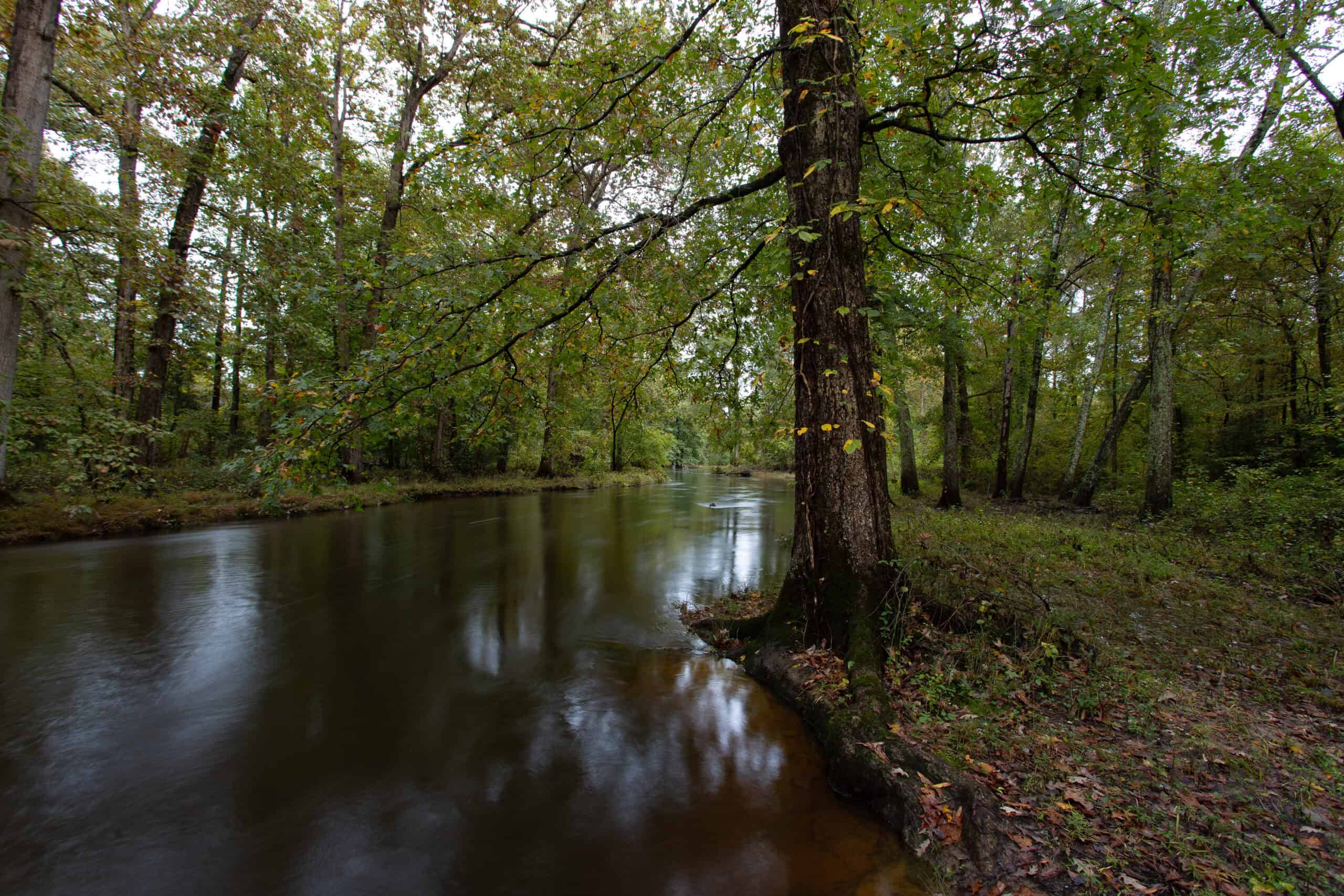Henrico, VA – Since his early childhood, Irvine Wilson has called a patch of forests and fields along the Chickahominy River home – 330 acres of family land called Indian Springs Farm near Sandston. The farm has a long and storied history, with evidence of Native American habitation back 10,000 years. That history feels present today in its mature hardwood forest and in the numerous springs that find their way to the farm’s frontage on the scenic Chickahominy River.
The Wilson family’s love of Indian Springs Farm motivated them to place a conservation easement with The Nature Conservancy on 287 acres of the property in 2015. When, in 2023, Irvine and his wife Lynn were ready to protect the farm’s remaining acreage, they turned to Capital Region Land Conservancy (CRLC). “Witnessing the growth and achievements of CRLC, especially in Henrico County’s traditionally rural Varina district, made us want to work with the hometown team,” says Irvine. Having the easement held locally, especially given the growing partnership between CRLC and the Henricopolis Soil and Water Conservation District (HSWCD) in co-holding easements, gave them even greater satisfaction.
“The Wilson’s decision shows the power of landowners’ to do good,” says Nicole Anderson Ellis, Henricopolis’ Soil Conservation Easement Specialist. “This easement preserves the public benefits of green space – healthier air, less flooding, cooling habitat – while keeping the land in private hands.”
Capital Region Land Conservancy and Henricopolis Soil and Water Conservation District first took assignment of the 287-acre easement from The Nature Conservancy in late 2023 and then completed recordation of an easement on the remaining 43 acres in September of this year. The magnitude of what is protected is a historic win for people in this region and, of course, for nature. Lynn likes to say, “We did it for the wildlife, some surely rooted in this very place for millennia.”
The easements front on a half-mile of the Chickahominy River that span Henrico and New Kent Counties and include more than two-thirds of a mile of tributaries feeding the river. In addition, the Virginia Department of Conservation and Recreation Natural Heritage Program has documented a 115-acre unique natural community known as a “Non-Riverine Wet Hardwood Forest” that is designated as imperiled for both state and global rankings since there are so few high-quality examples remaining anywhere.
The Natural Heritage Program also ranks, identifies, and delineates Virginia’s highest priority lands for protection into seven categories. Indian Springs Farm is listed in three of them: Natural Habitat and Ecosystem Diversity, Floodplains & Flooding Resilience, and Cultural & Historic Preservation. Accordingly, the Virginia Department of Historic Resources has documented two historic resources on the property.
Portions of Indian Springs Farm were listed on the Virginia Landmarks Register earlier this year and are eligible for listing on the National Register of Historic Places. This is due to found evidence of a village relating to Virginia Woodland Indians from approximately 1,200 BCE to the early 17th century, when Paramount Chief Powhatan and his people relocated from Werowocomoco (Gloucester County) to Orapax (New Kent County) in the early 1600s. Indian Springs Farm and its cultural resources were visited by George Major Cook (1860-1930) – also known as Wahunsacook or Wahansunacoke – Chief of the Pamunkey Indians from 1902 to 1930, an influential force in fighting for the rights of Virginia’s Indian communities throughout his life.
The easements help protect prime farmland in Virginia, restrict the amount of impervious surface that can be placed on the land and require a minimum of 100 feet of forested buffers along all perennial streams and wetlands. The easements establish over 213 acres of forest preservation and buffer areas that are to remain forever forested. When asked about how this easement would impact their lives, the Wilsons say simply this: “We continue to steward this remarkable land and its stories as best we can. We are gratified to have such strong partners in its protection, and to know that this work will carry on far into the future.”
###
About Capital Region Land Conservancy (CRLC): Capital Region Land Conservancy is dedicated to conserving the natural and historic resources of Virginia’s Richmond region for the benefit of people and nature. The nonprofit land trust serves the City of Richmond and 19 surrounding counties. Since 2005, CRLC has helped protect more than 14,000 acres, including easements on more than 3,400 acres.
Contact: Parker C. Agelasto, Executive Director, Capital Region Land Conservancy parker@capitalregionland.org
About Henricopolis Soil & Water Conservation District (HSWCD): One of 47 Soil & Water Districts across Virginia – HSWCD uses education, cost-sharing, and other tools to encourage best conservation practices by farmers, homeowners, businesses and more. While the Henricopolis District shares boundaries with the county of Henrico, it is an autonomous government body guided by a board of five voting members, including three elected directors representing the citizens of the district.
Contact: Nicole Anderson Ellis, Board of Directors Vice-Chair, Henricopolis Soil & Water Conservation District; nicoleandersonellis@gmail.com
Images Credit: Irvine Wilson

